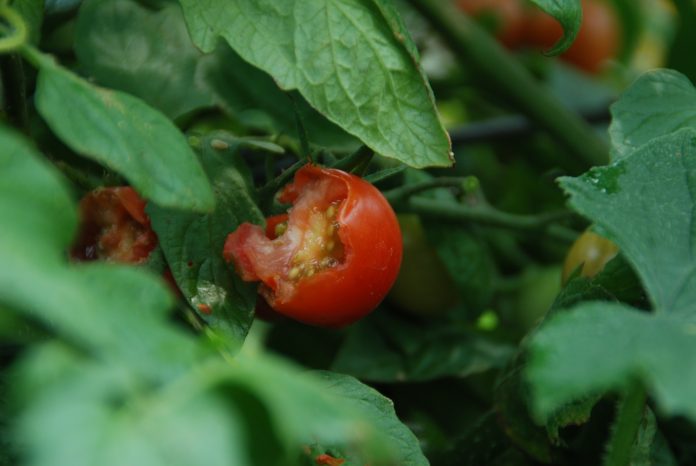

You take a walk through the garden and find branches trimmed, flowers missing or bark damaged. Of course, the culprit is nowhere to be seen. You may have suspects in mind but a close look at the damage and surroundings can help you identify who is dining on your plants. Knowing this can help you reduce the risk in the future.
Rabbits can be found year-round in the landscape. They have sharp teeth, making a 45-degree clean cut much like your bypass pruners. Their damage usually occurs within their 3-foot reach.
They eat a variety of flowers and vegetables throughout the spring and summer. As these plants fade in fall, they begin dining on trees and shrubs. You may find bark gnawed and branches, stems, and buds clipped off the plants.
Deer tear vegetation, leaving a ragged tip on browsed plants. You may find damage on a variety of flowers, vegetables, trees, shrubs, and plants pulled out of the ground with the distasteful ones left behind. In fall, the bucks rub trunks of young trees damaging the tender tissue below that transports water and nutrients between the roots and leaves. Deer usually feed at dusk but as they become comfortable around people they can often be seen dining during the day.
Voles are brown rodents that look similar to field mice with small ears and short tails. Their trails of disturbed grass found as the snow melts may be your first clue that they are present. These rodents are active year-round, unlike moles that hibernate for winter. They eat seeds, plant roots, and bulbs not insects like moles. As the snow recedes, you may also notice bark damage on trees and shrubs. They leave ¼” side-by-side grooves in the wood at the base of the plants.
Squirrels are fun to watch; that is until they eat all the birdseed and damage your plants. They dig bulbs and uproot other plants, eat and bury nuts in the lawn and garden, and take a bite out of multiple tomatoes, strawberries, and more. They damage trees by ripping off the bark and clipping off branches. If that wasn’t enough, they may gnaw on structures and furnishings. Treating the damaged area and a 12” radius around it with a repellent can help discourage more damage.
Chipmunks are active from spring through fall. They don’t hibernate but are inactive in winter depending upon their food stash to survive. You will find them digging in potted plants, hanging baskets, and rock walls. They eat grains, nuts, berries, seeds, insects, mushrooms, carrion, young birds, and bird eggs.
Their tunnels can be 20 to 30 feet long and are well hidden. The openings are only 2” in diameter with no surrounding mounds of soil.
Commercial and homemade scare tactics are an option. Unfortunately, most of these critters have become accustomed to people and are not deterred. Motion-activated ones are a bit more effective but make sure they are not annoying to you and your neighbors.
Fencing tight to the ground with a secure gate and at least 3 feet – preferably 4 feet – high is effective for preventing rabbit damage. Deer on the other hand need a much taller fence. Although they can jump 7 feet or higher, a 5-6’ fence is often enough to keep them out of smaller gardens. Sink fencing 4 to 6” into the ground to protect plants from voles.
Repellents labeled for controlling the critter that is causing the damage are another option. Organic Plantskydd is labeled for repelling, not harming, all of these critters so you only need one product. Since it is rain and snow resistant, you won’t need to apply it as often. Always read and follow label directions for the most effective control.
A bit of defensive action goes a long way in protecting your gardens and landscape from hungry critters this season.

















